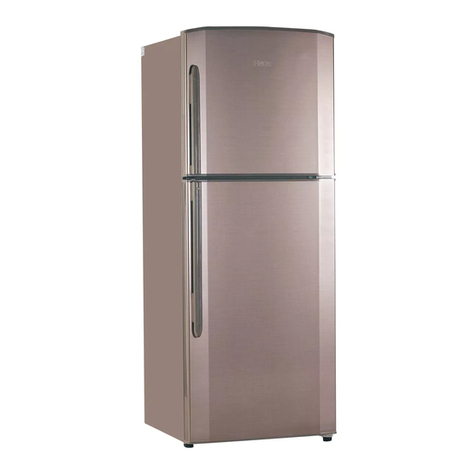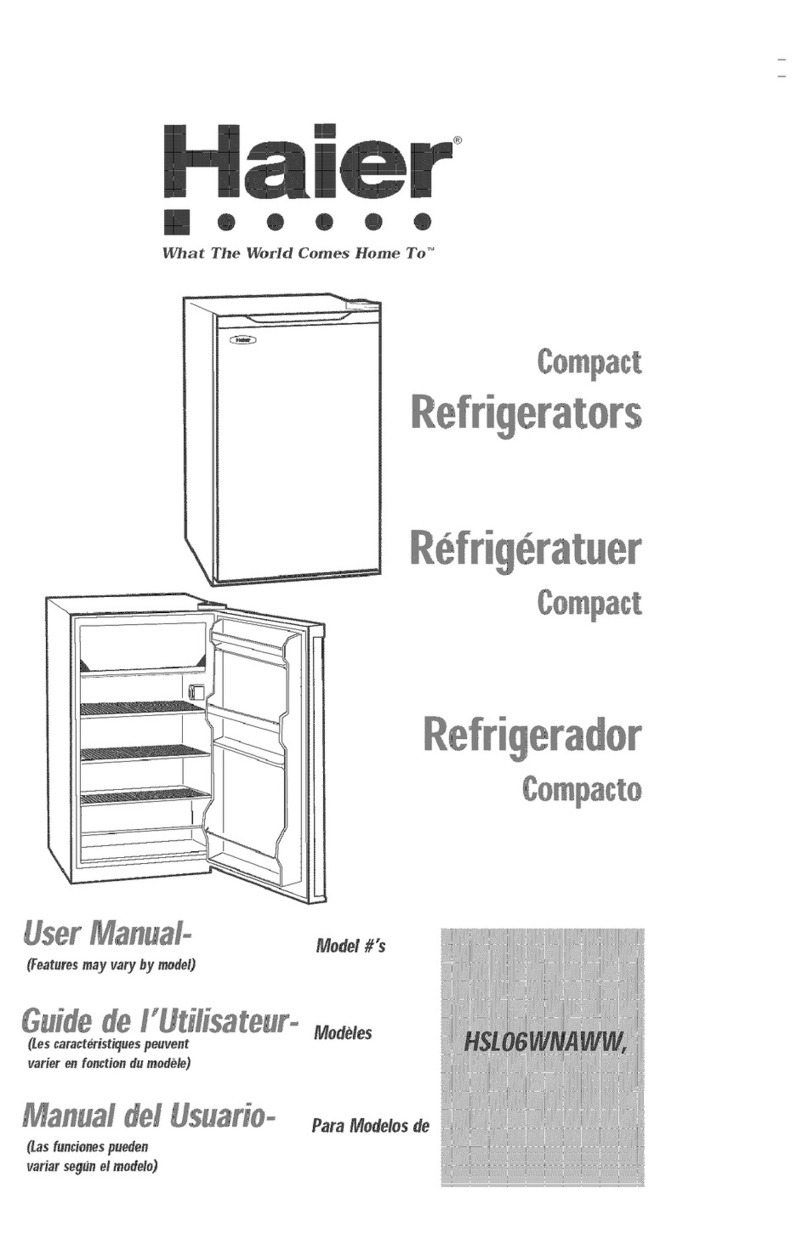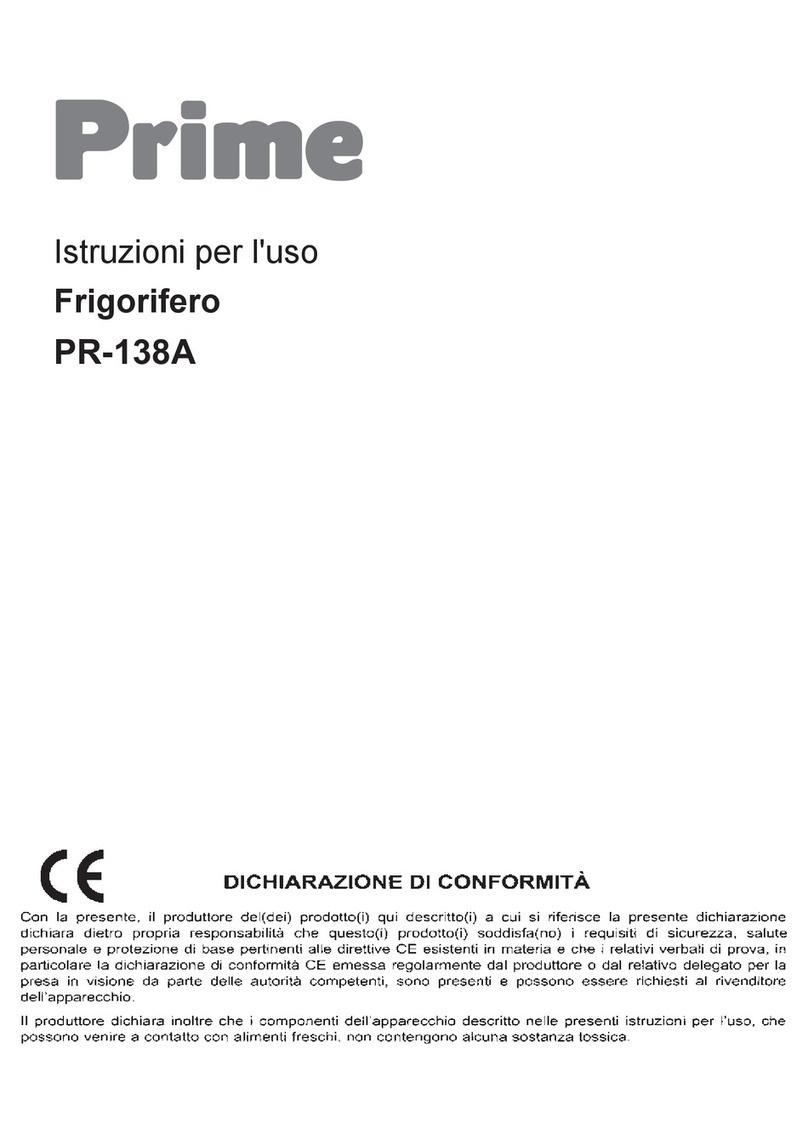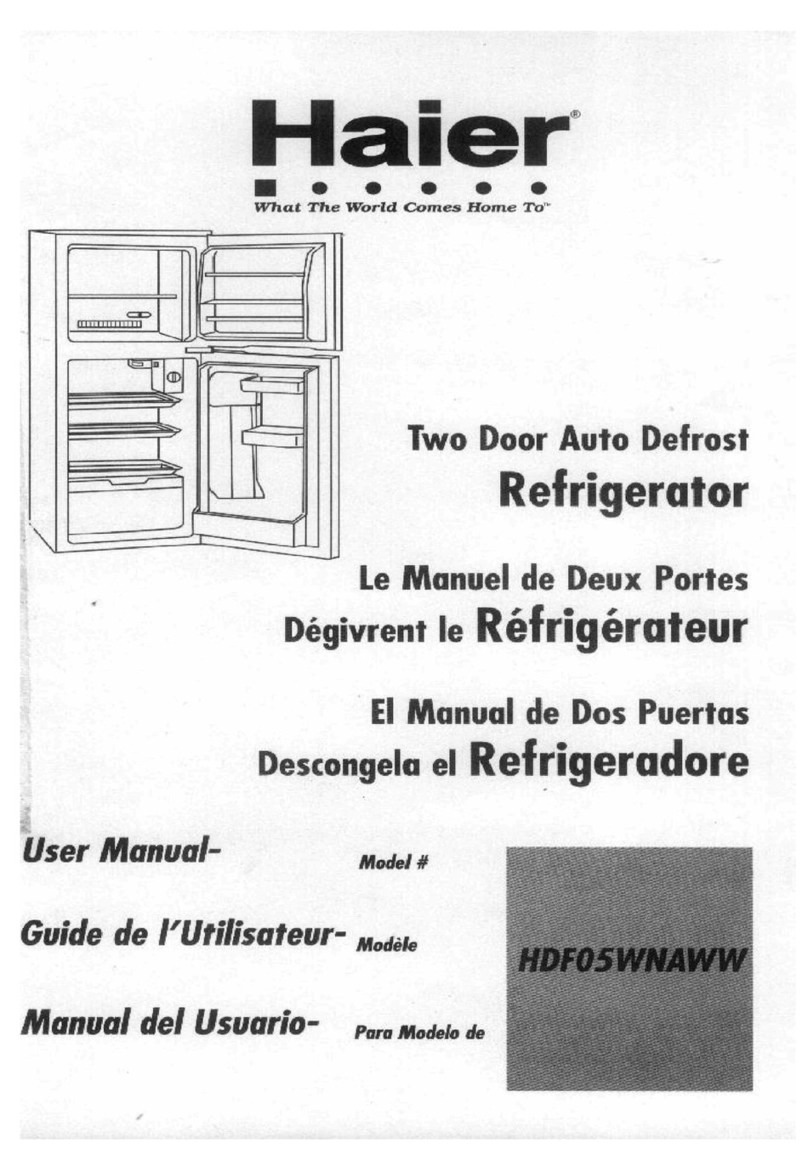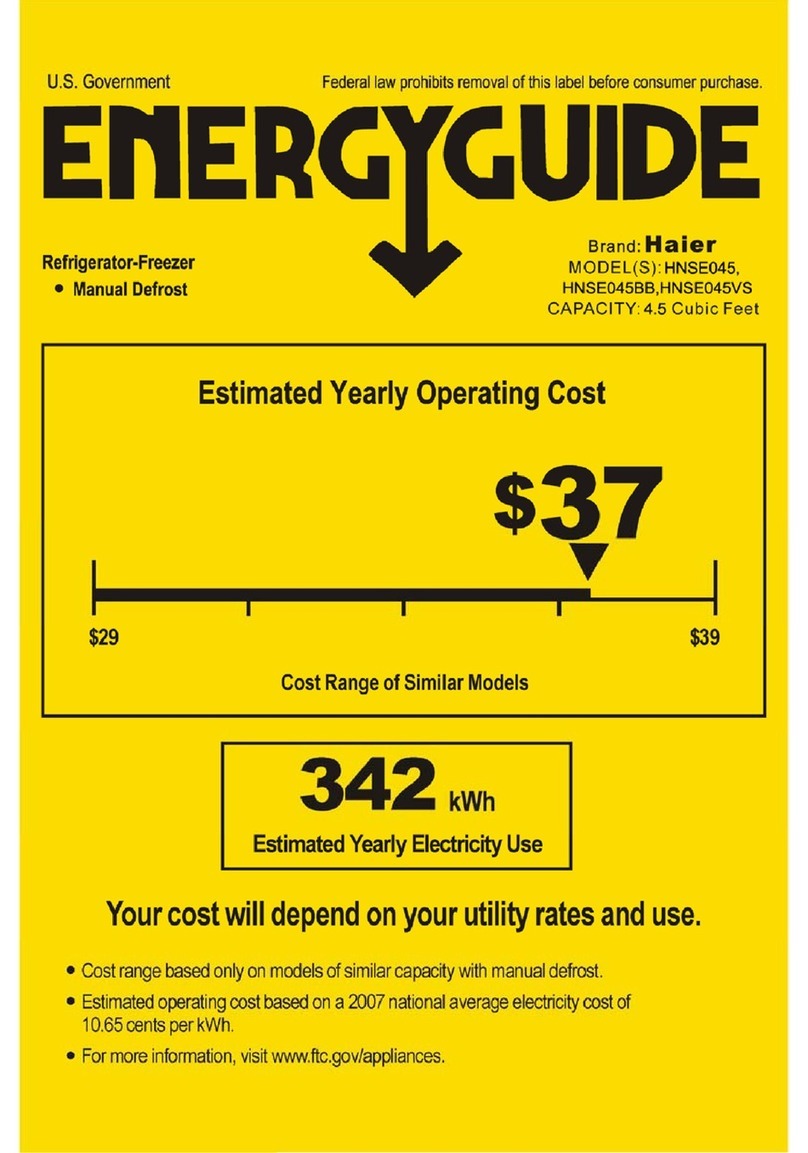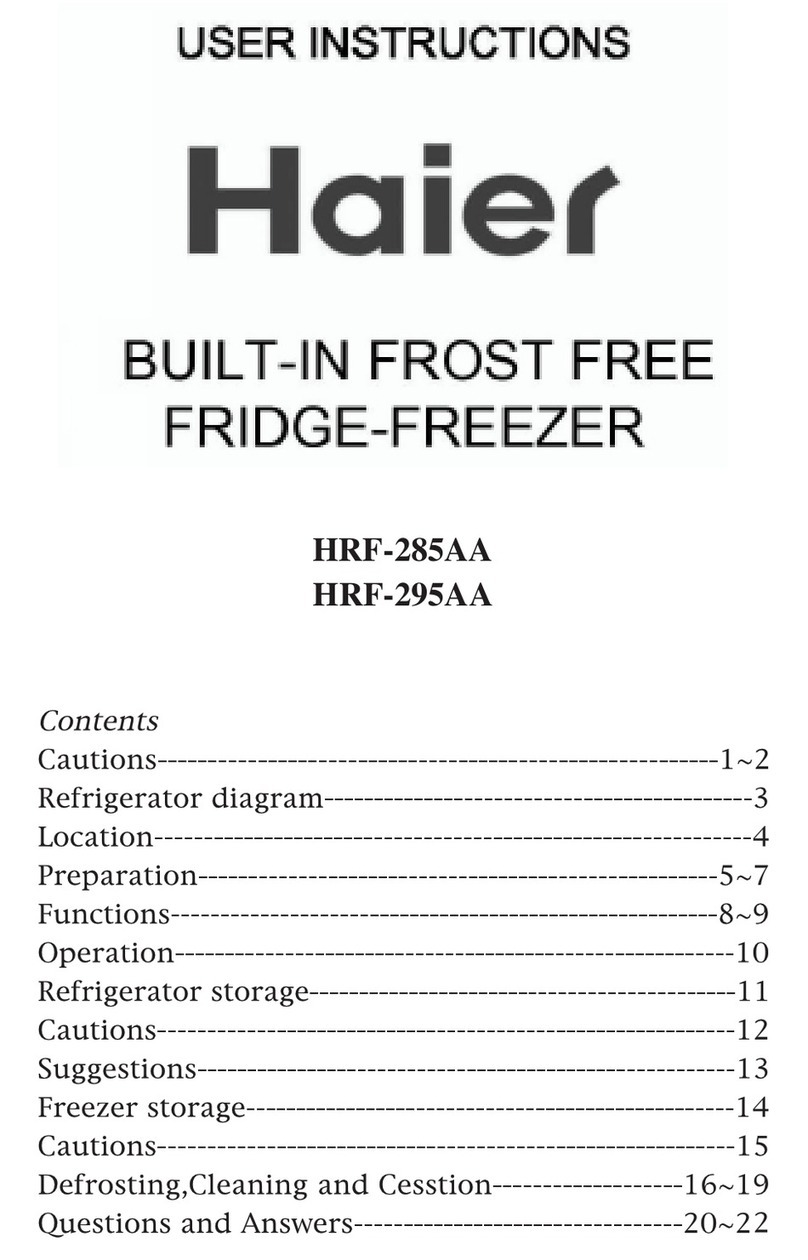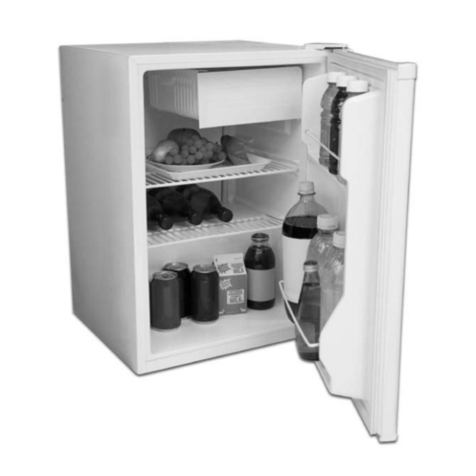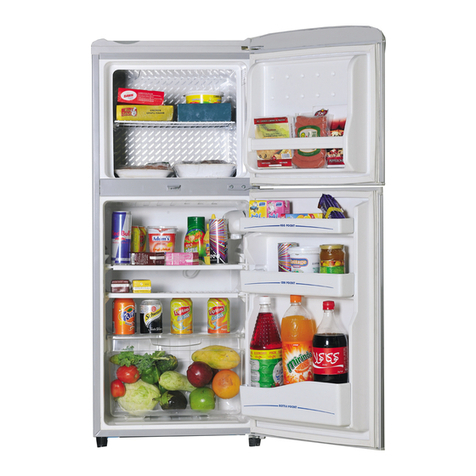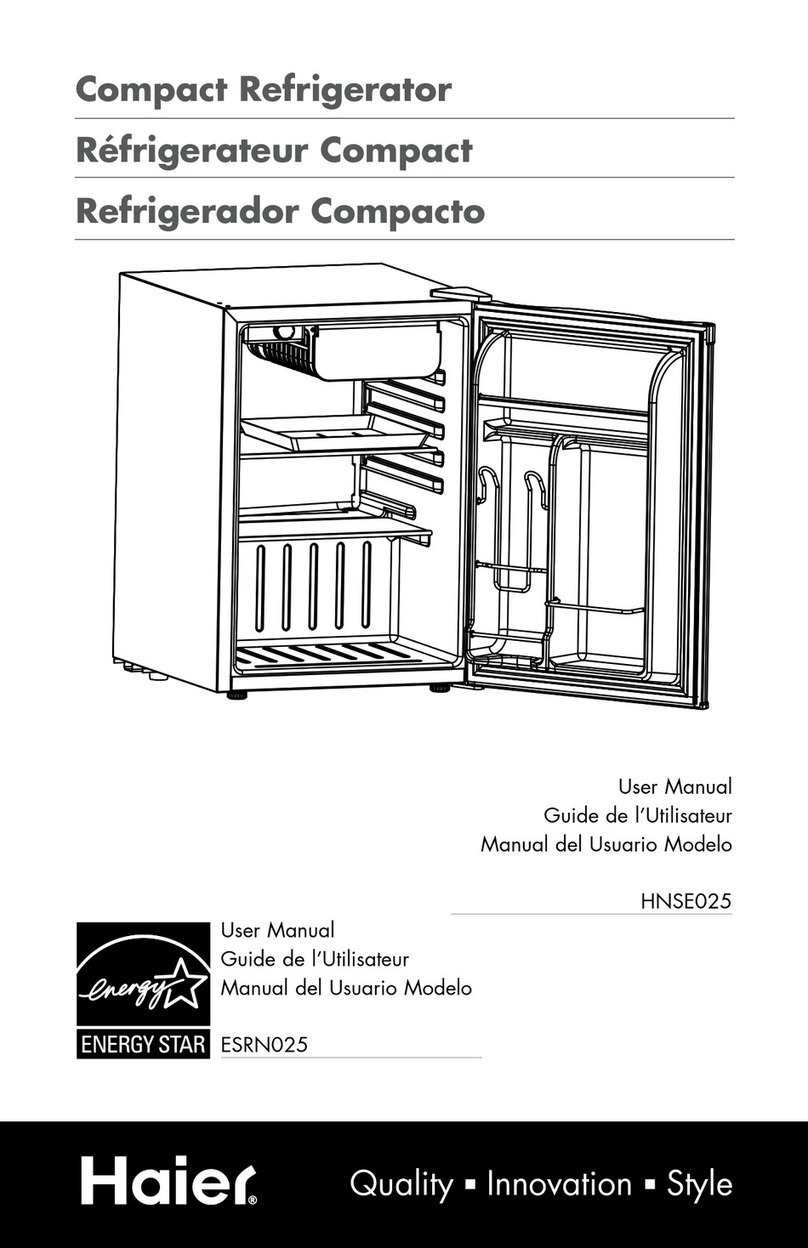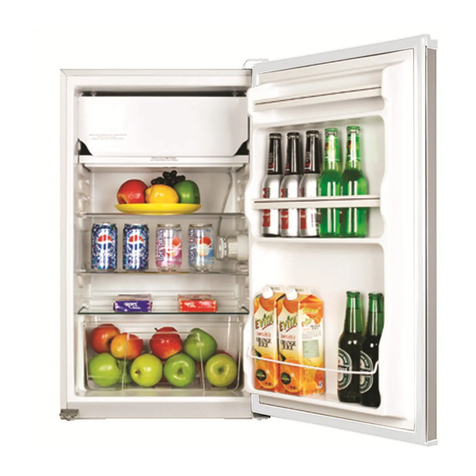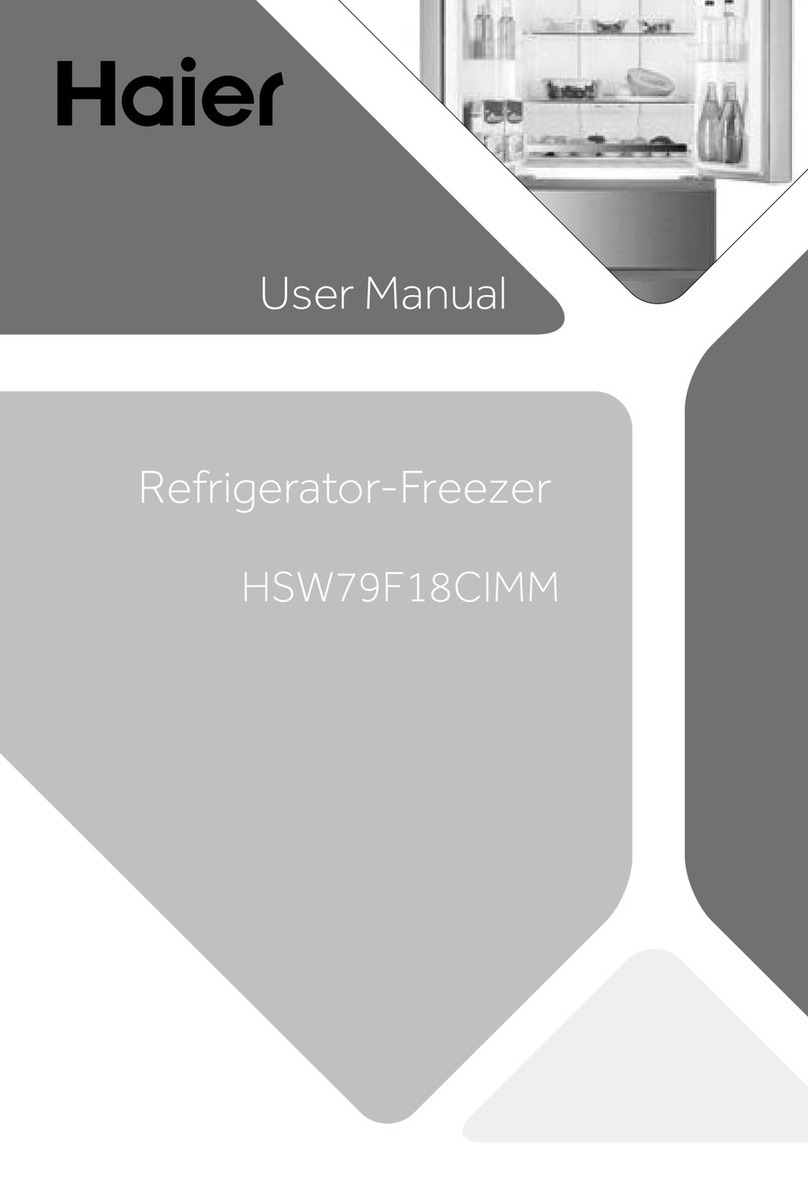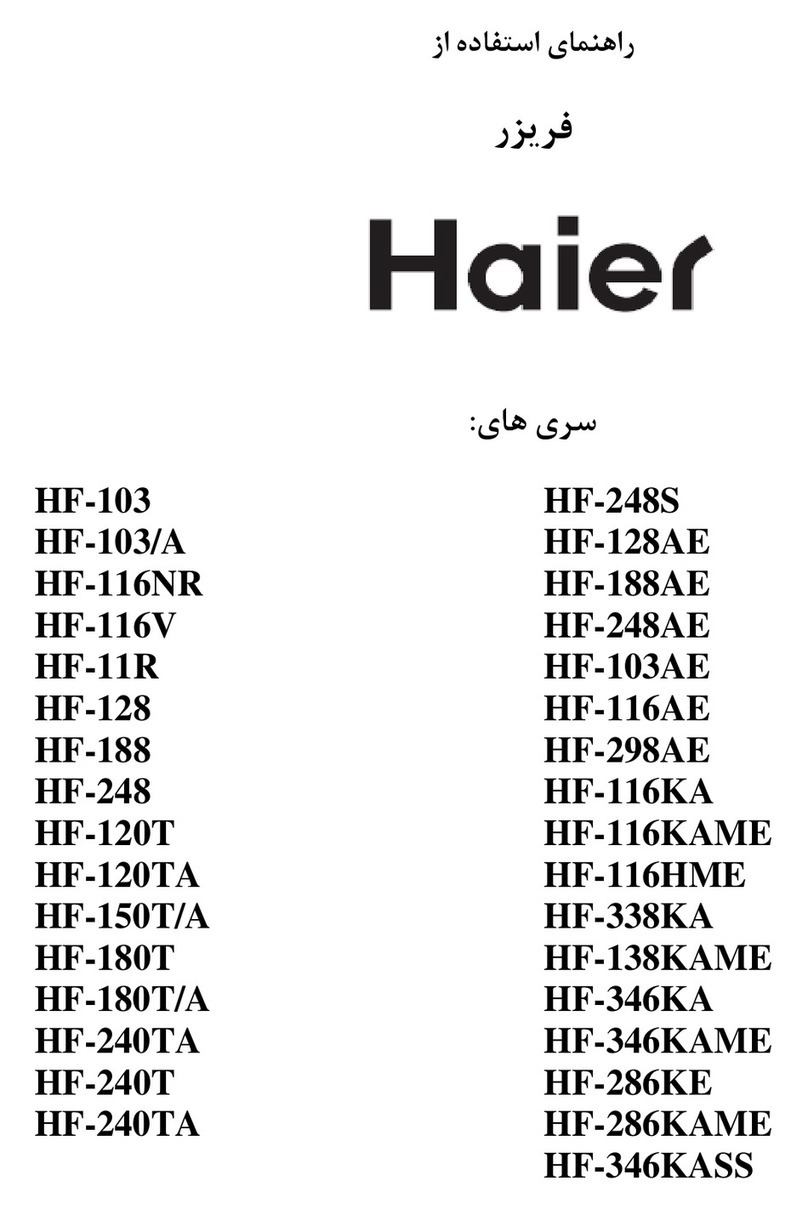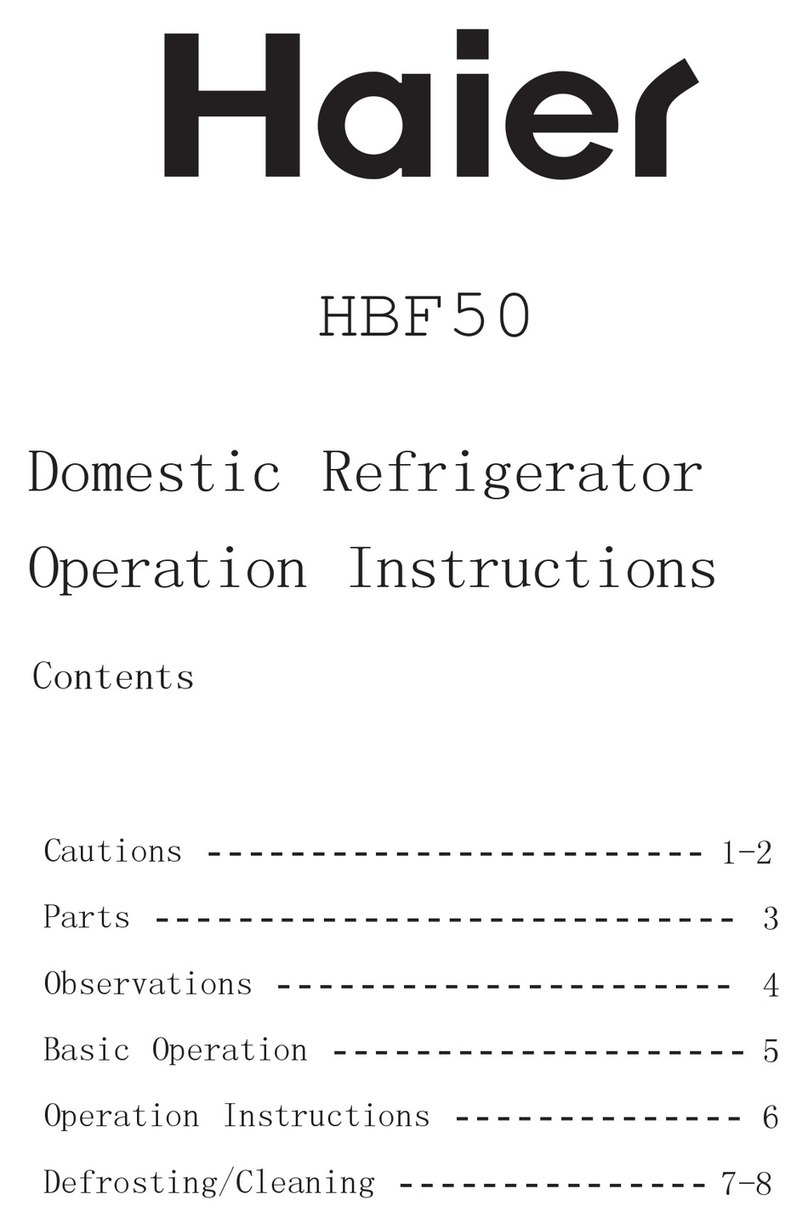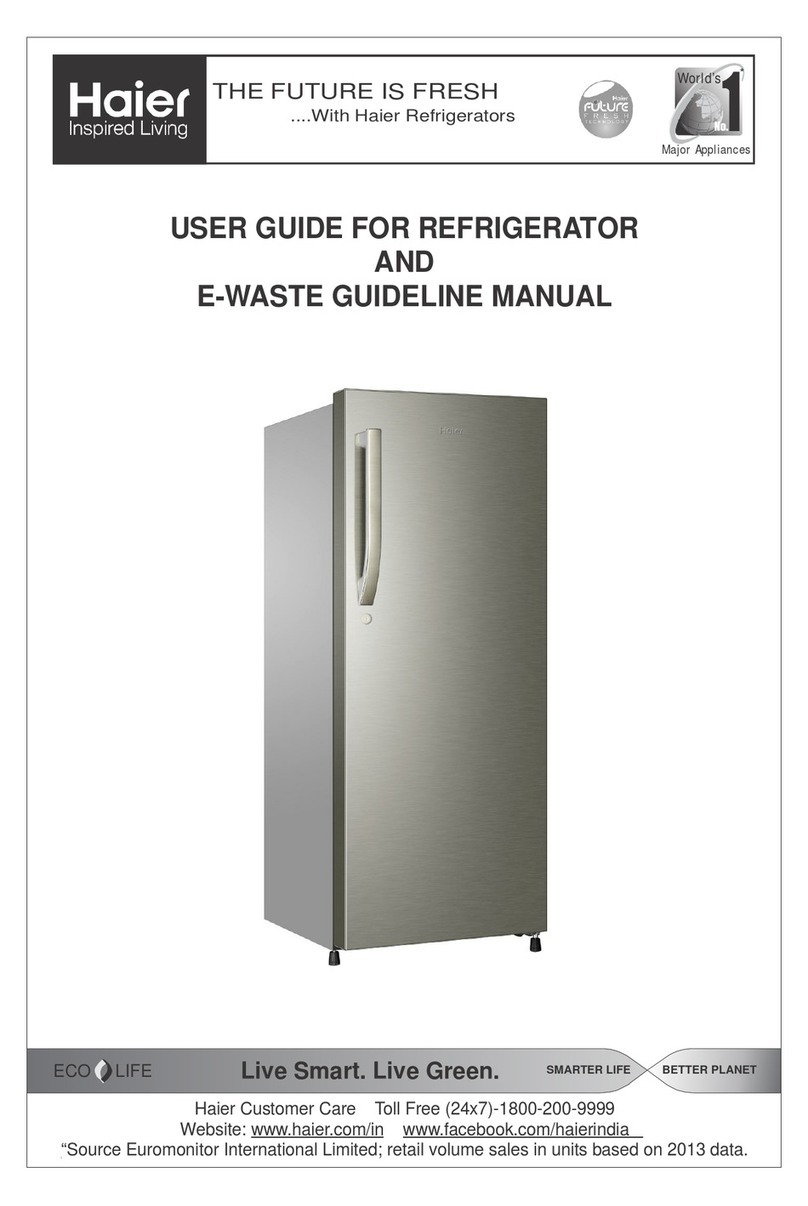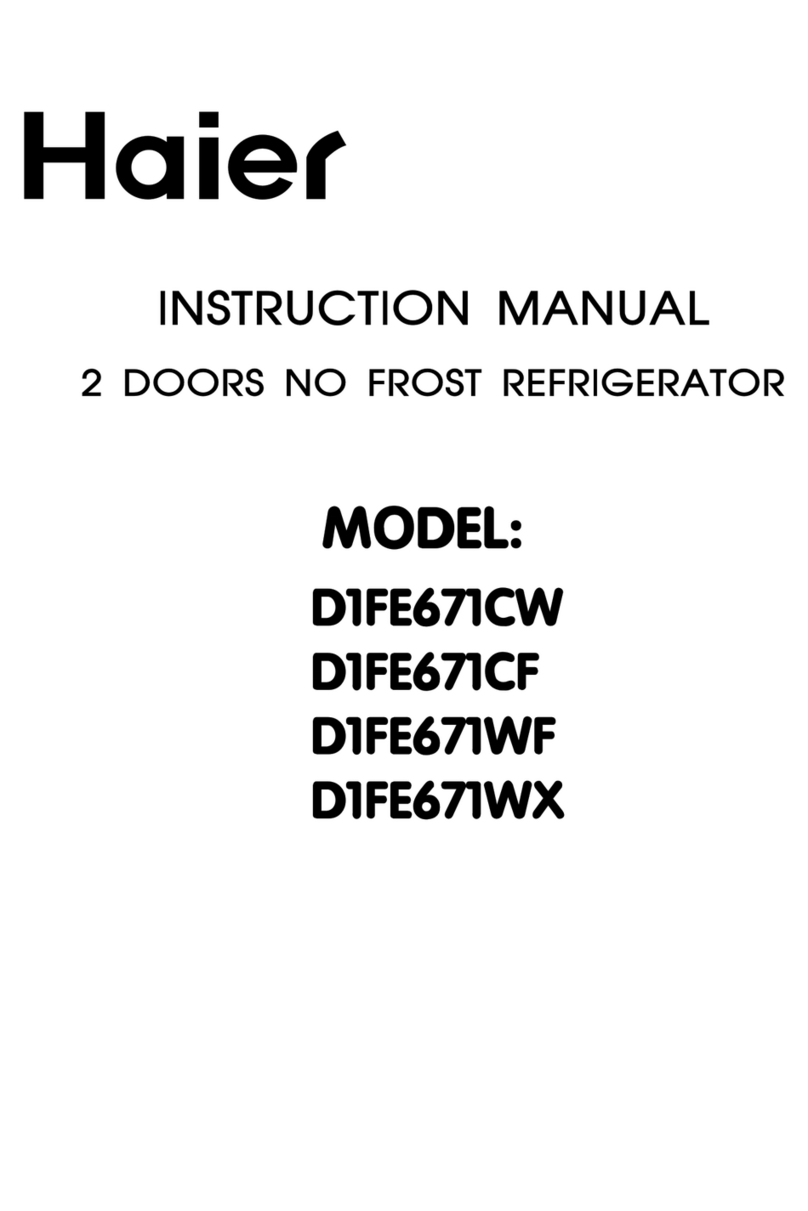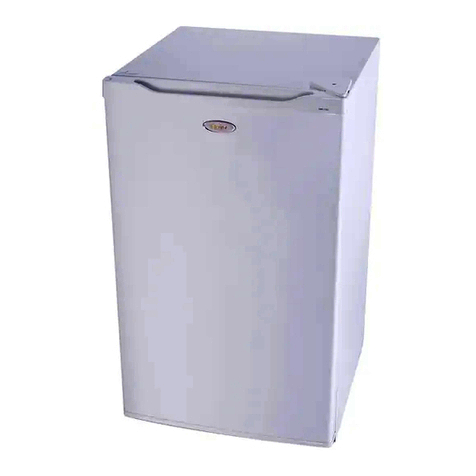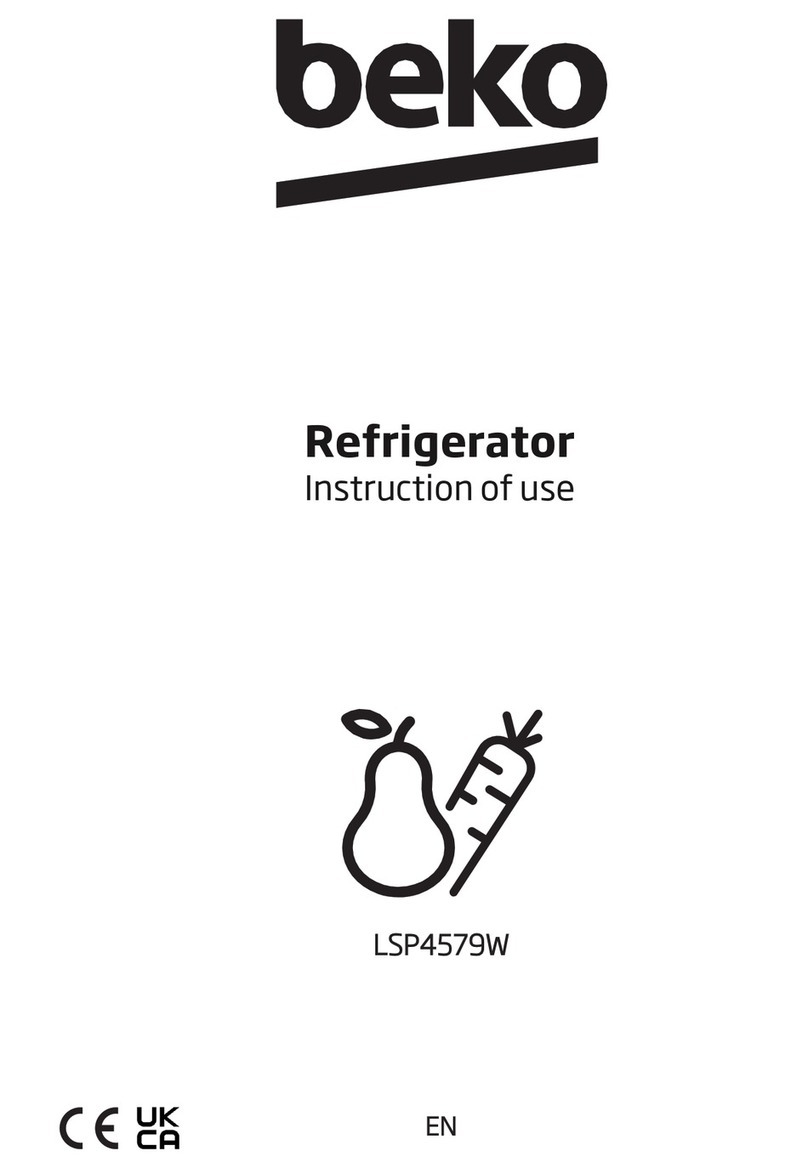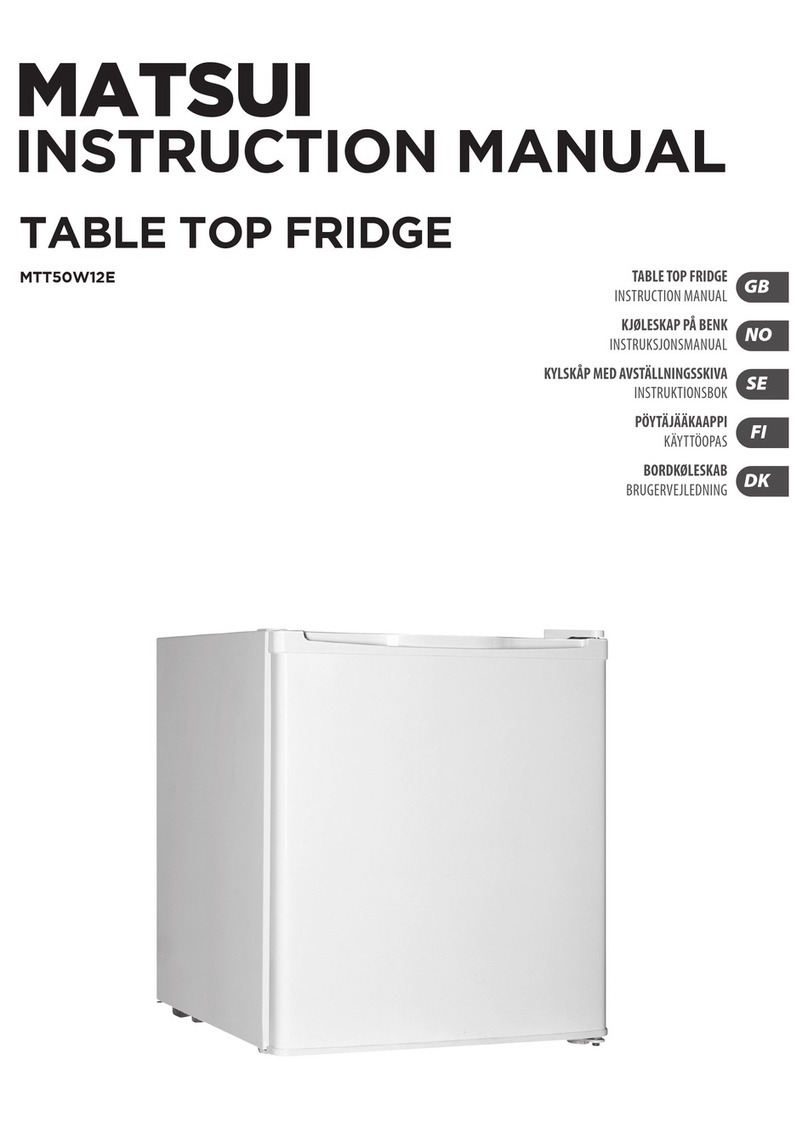-6-
The indoor temperatures are influenced by the following factors:
lAmbient temperature
lFrequency of door opening
lAmount of stored foods
lInstallation of the appliance
STORAGE OF FOOD
How to Use the Freezer Compartment?
lPut fresh food, such like fish or meat, into the freezer to save their taste and
nutrient.
lWrapped food has to be frozen in aluminum sheet or cellophane sheet or in airtight
plastic boxes.
lDo not put fresh food directly in contact with food already frozen.
lIf you buy frozen food, bring it home and place it in freezer as quickly as possible.
lNever re-freeze a defrosted product.
lDo not store liquids in bottles or cans(besides high percentage spirits) especially
carbonated beverages in the freezer, as these will burst during freezing
lThe storage time for the respective food (especially for commercially frozen food)
recommended by the food manufactures should not be exceeded. Only take the
required amount of food out pf the freezer.
lDuring defrost or, maintenance and care the temperature of frozen food could
arise and the storage time could be shorter
How to Use the Refrigerator Compartment?
lEggs have to be put in the eggs’ pockets, bottles in the bottles’ pocket, etc.
lFruits and vegetables have to be put in the salad crisper.
lJars have to take place in the tubs of the door of the refrigerator.
lOther perishable food, or which can loosen stenches in the refrigerator, must be
separately packed.
Placement of Food
lPlease not accumulate too much food in the refrigerator because it would
engender a loss of cold.
lFood has to be wrapped separately in aluminum sheet or in cellophane sheet or in
airtight plastic boxes.
lHot food cannot be put in the refrigerator or in the freezer until they have reached
the ambient temperature, or it will increase electrical consumption.
lNever place vegetables and fruits into freezer compartment because they will be
unfit for the consumption once defrosted.
When the refrigerator working for a long time, the inner surface of the freezer will be
covered with a layer of hoarfrost. It may raise the electricity consumption and decrease
the effect of refrigeration. Then you should defrost your freezer once a month.
DEFROSTING
